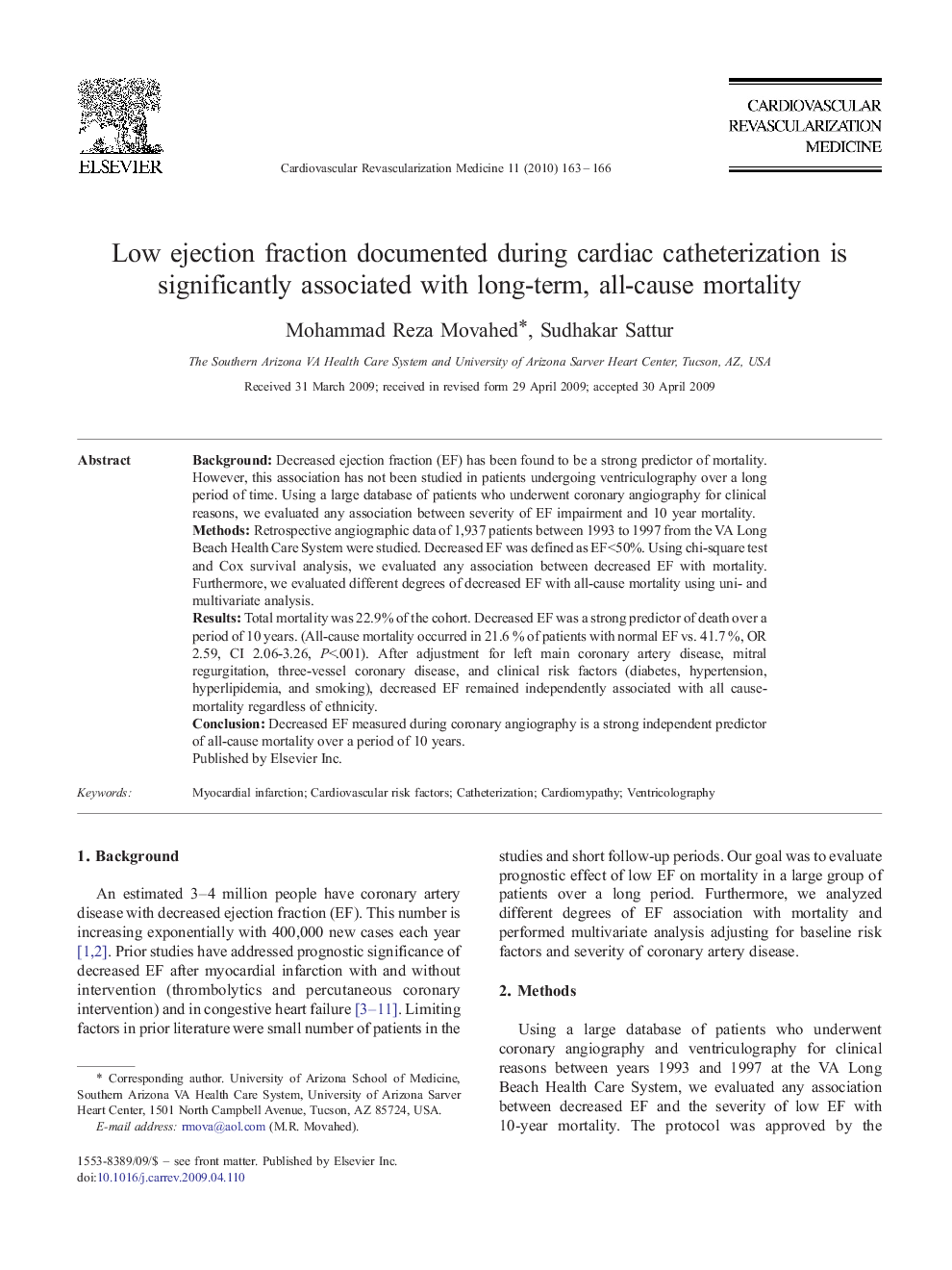| Article ID | Journal | Published Year | Pages | File Type |
|---|---|---|---|---|
| 2837597 | Cardiovascular Revascularization Medicine | 2010 | 4 Pages |
BackgroundDecreased ejection fraction (EF) has been found to be a strong predictor of mortality. However, this association has not been studied in patients undergoing ventriculography over a long period of time. Using a large database of patients who underwent coronary angiography for clinical reasons, we evaluated any association between severity of EF impairment and 10 year mortality.MethodsRetrospective angiographic data of 1,937 patients between 1993 to 1997 from the VA Long Beach Health Care System were studied. Decreased EF was defined as EF<50%. Using chi-square test and Cox survival analysis, we evaluated any association between decreased EF with mortality. Furthermore, we evaluated different degrees of decreased EF with all-cause mortality using uni- and multivariate analysis.ResultsTotal mortality was 22.9% of the cohort. Decreased EF was a strong predictor of death over a period of 10 years. (All-cause mortality occurred in 21.6 % of patients with normal EF vs. 41.7 %, OR 2.59, CI 2.06-3.26, P<.001). After adjustment for left main coronary artery disease, mitral regurgitation, three-vessel coronary disease, and clinical risk factors (diabetes, hypertension, hyperlipidemia, and smoking), decreased EF remained independently associated with all cause-mortality regardless of ethnicity.ConclusionDecreased EF measured during coronary angiography is a strong independent predictor of all-cause mortality over a period of 10 years.
